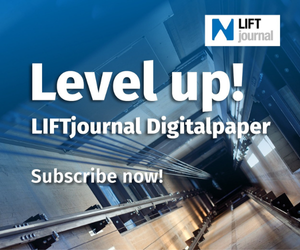Easier lift modernisation
In the past, anyone who operated older lifts often had to carry out far-reaching conversions. The current Operational Safety Ordinance means earlier technical regulations in part require amendment.
This provides an opportunity to realise the changes in a more efficient and targeted manner. Up to now, anyone who wanted to alter their existing lifts had to make provision for a series of follow-up measures. For example, if the electrical control had to be renewed, it was necessary to adjust the emergency call equipment to the current state of the art and retrofit various shaft installations and additional control systems.
In the event of safety-relevant conversion, the Technical Regulations for Operational Safety (TRBS) 1121 require all associated systems be renewed in order to bring the lift up to the state of the art. According to the currently valid Operational Safety Ordinance (BetrSichV), this is no longer mandatory on this scale.
Action guidelines outdated
BetrSichV requires that only safe working equipment (which also includes lifts) be provided. For this purpose, depending on the hazard evaluation, regular maintenance work and modernisation is necessary. Due to the amendment of the BetrSichV in 2015, the old TRBS 1121 is no longer compatible in many respects.
Changes no longer have to be executed according to the state of the art as for a new lift. Only use needs to be guaranteed according to the state of the art. Thus, "safe use" is the measure of all things, which now also permits minor conversions. This means the safety of existing lifts can be enhanced faster.
In a current decision, the Experience Exchange Group of the authorised inspection bodies indicated that TRBS 1121 and DIN EN 81-20 are no longer decisive for the implementation of changes. A change that is safety-relevant, i.e. one subject to examination, also complies with the BetrSichV when it makes adequate allowance for the resulting risk. Consequently, a modernisation or another conversion measure does not necessarily have to meet the requirements for a new lift.
More room for manoeuvre in implementation
The current legal position implies that the TRBS 1121 needs to be updated as soon as possible. The same applies for example to the widely-distributed action guideline of the German Committee For Lifts (the so-called "DAfA" action guideline). During the transitional period, the experts of TÜV SÜD recommend always carrying out a check in the event of changes to the lift to see how safe use of the entire lift can be guaranteed.
Overall, one can say that the BetrSichV now grants operators more room for manoeuvre for taking actions and decisions to coordinate the modernisations needed better to the existing budget. If there is doubt whether and how a lift is to be modernised, the independent experts of TÜV SÜD provide support in analysing the safety level and in selecting suitable measures.
www.tuev-sued.de






















Write a comment